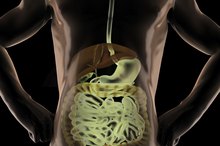What does fact checked mean?
At Healthfully, we strive to deliver objective content that is accurate and up-to-date. Our team periodically reviews articles in order to ensure content quality. The sources cited below consist of evidence from peer-reviewed journals, prominent medical organizations, academic associations, and government data.
The information contained on this site is for informational purposes only, and should not be used as a substitute for the advice of a professional health care provider. Please check with the appropriate physician regarding health questions and concerns. Although we strive to deliver accurate and up-to-date information, no guarantee to that effect is made.
End Stage Liver Disease Life Expectancy
The life expectancy of a patient with end-stage liver disease is bleak, from weeks to a few months. A liver transplant may be the only option for survival of some liver disease processes 2.
If you are experiencing serious medical symptoms, seek emergency treatment immediately.
Causes
End-stage liver disease is a condition of the liver that is untreatable. According to the Liver Disease Archive, conditions such as cirrhosis, metastatic liver cancer, viral hepatitis and autoimmune disorders are some of the disease processes that can cause end-stage liver disease.
Outcome
What Are the Last Stages of Liver Failure?
Learn More
End-stage liver disease is considered terminal unless the patient receives a liver transplant 2. Hospice care is available when the patient's life expectancy is six months or less. Only your health care provider can give a prognosis based on specific laboratory and subjective criteria.
More Causes
WebMD states that if the liver failure is acute, such as in an acetaminophen overdose, rapid intervention may allow the liver to recover. Other causes include ingestion of poisonous wild mushrooms and reactions to medications (see Resources).
Options
Causes of Spots on the Liver
Learn More
According to the Mayo Clinic, about 6,000 liver transplants occur every year in the United States 2. Livers may come from deceased donors or a portion of a liver may be harvested from a living donor. The success rate for liver transplants is between 80 and 90 percent, according to the National Digestive Diseases Information Clearinghouse (see Resources).
Warning
According to the Liver Disease Archive, some patients may not be a candidate for a liver transplant; these patients will eventually die of end-stage liver disease 2.
Related Articles
References
- Montgomery Hospice: End-Stage Indicators
- Mayo Clinic: Liver Transplant
- American Liver Foundation. Liver Transplantation.
- United Organ Sharing Network (UNOS). Transplant Living. Liver.
- Scientific Registry of Transplant Recipients. OPTN/SRTR 2018 Annual Data Report: Liver.
- American Liver Foundation. Liver Transplantation.
- Scientific Registry of Transplant Recipients. OPTN/SRTR 2018 Annual Data Report: Liver.
- American Liver Foundation. Liver Transplant. Facts at a Glance.
- Coelho, JC, et al. Biliary Complications After Liver Transplantation. Arq Bras Cir Dig. 2017 Apr-Jun; 30(2): 127–131. doi:10.1590/0102-6720201700020011
- American Liver Foundation. The Progression of Liver Disease.
- National Institute of Diabetes and Digestive Disease. Liver Disease.
Writer Bio
Norene Anderson has been a writer since 2003. She is also a registered nurse with expertise in a wide range of medical conditions and treatments. Anderson received her associate degree in nursing from Lincoln University in Jefferson City, Mo.









